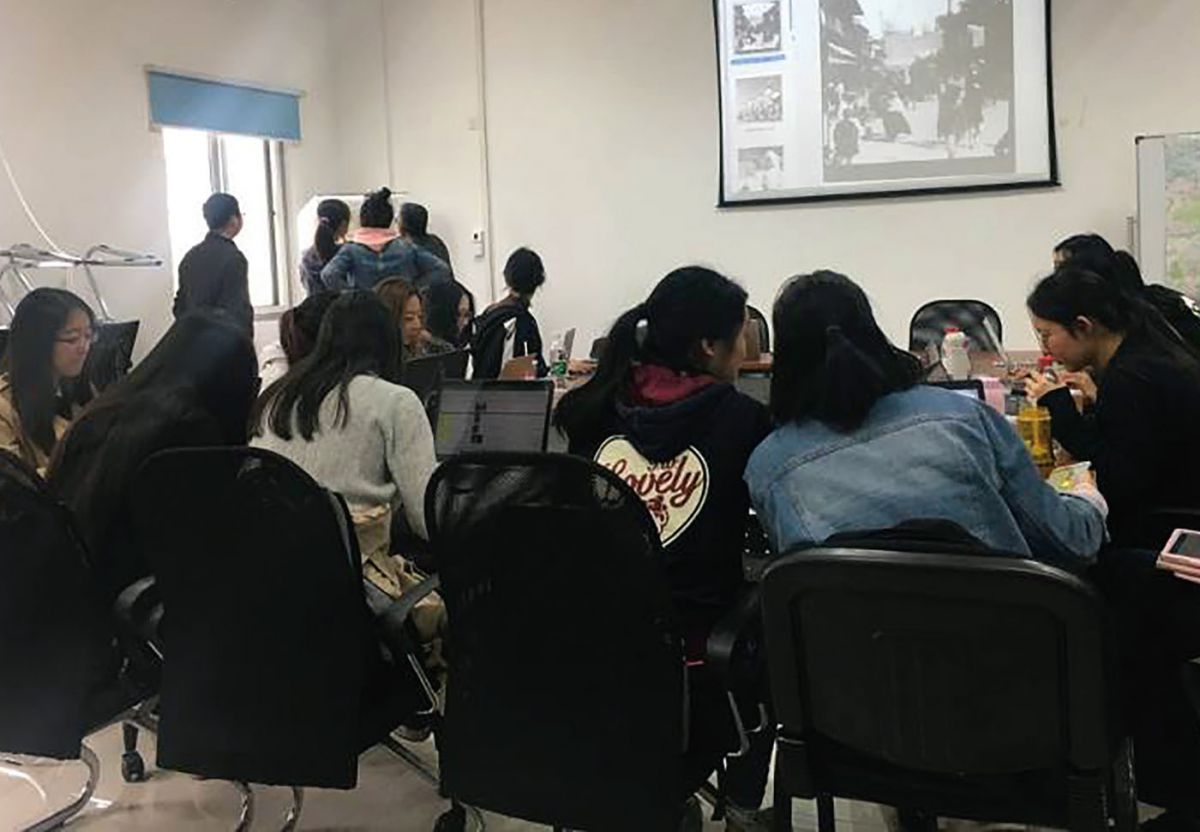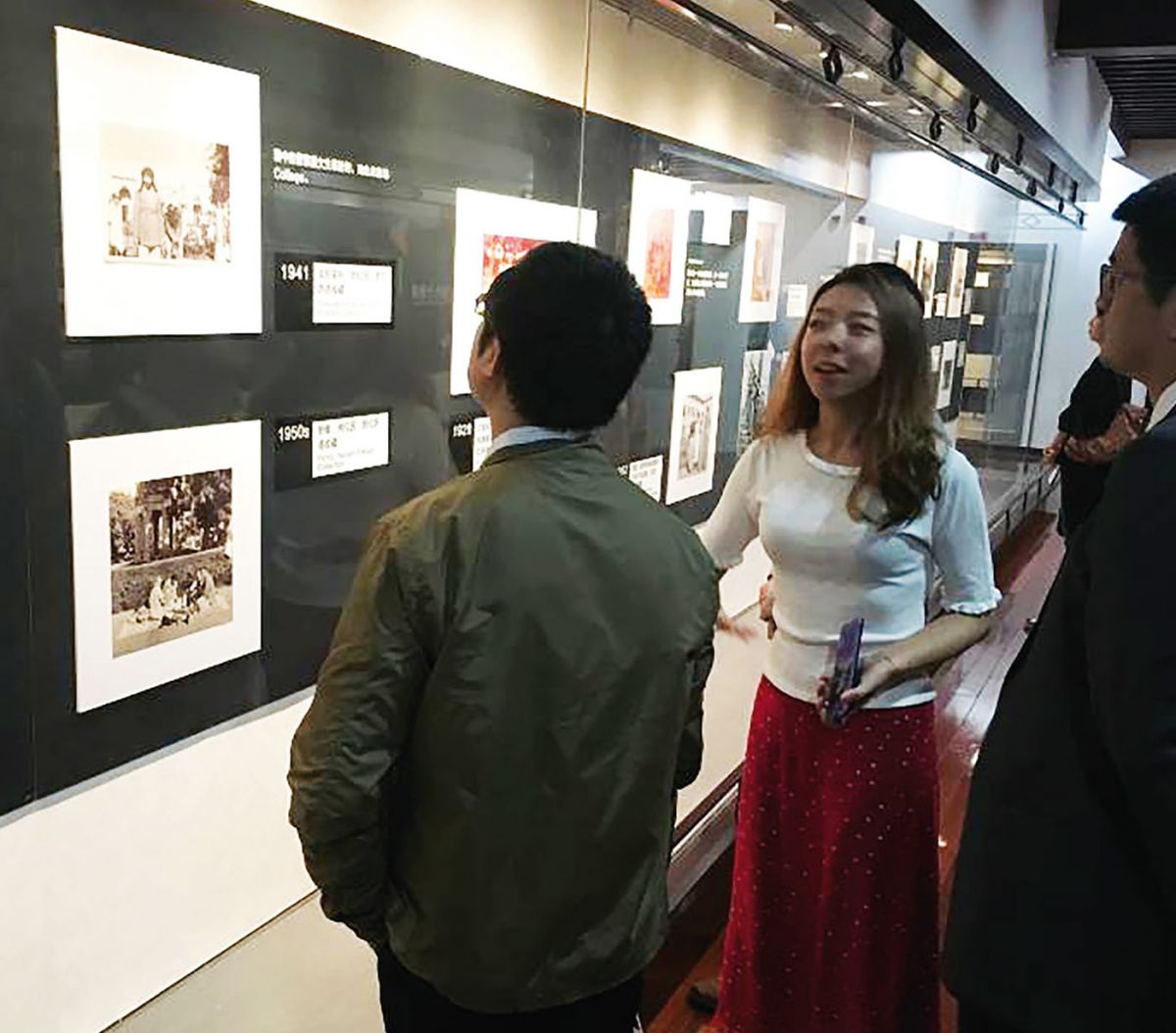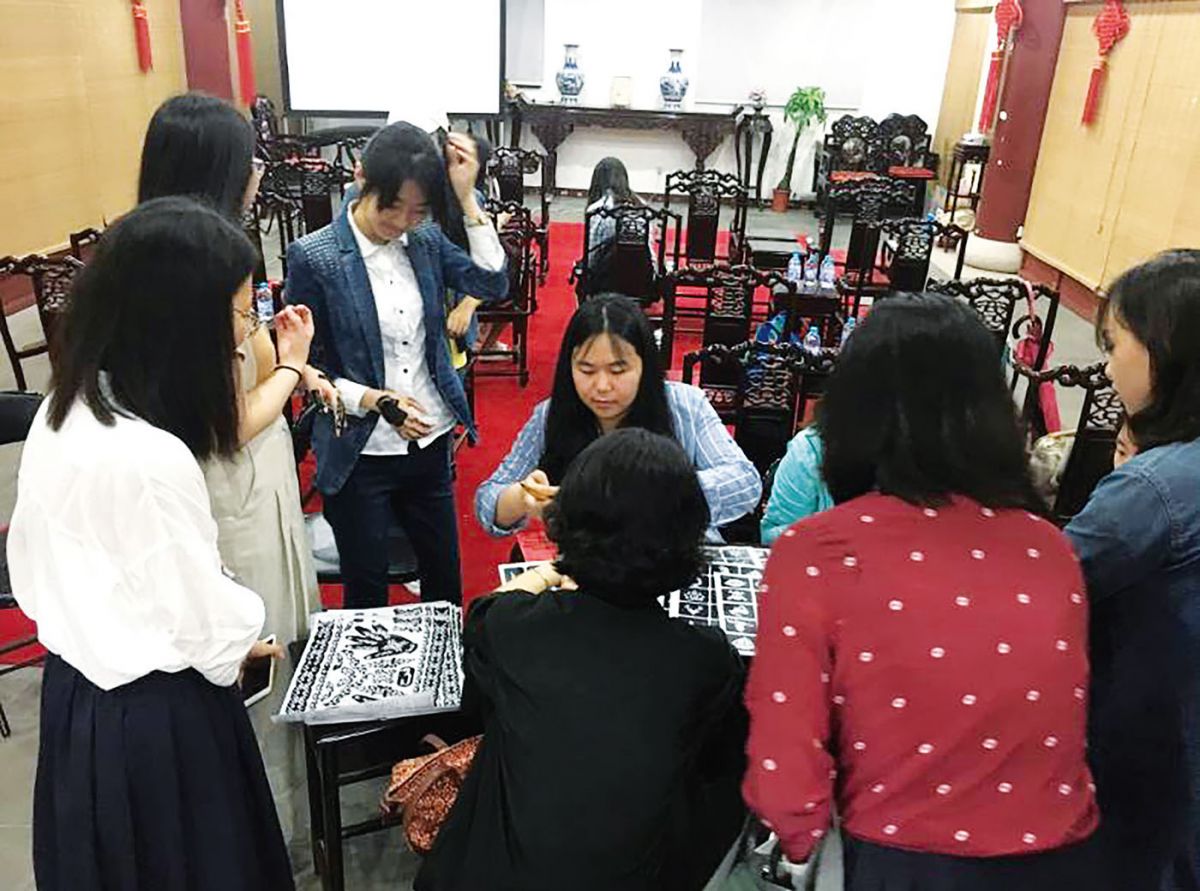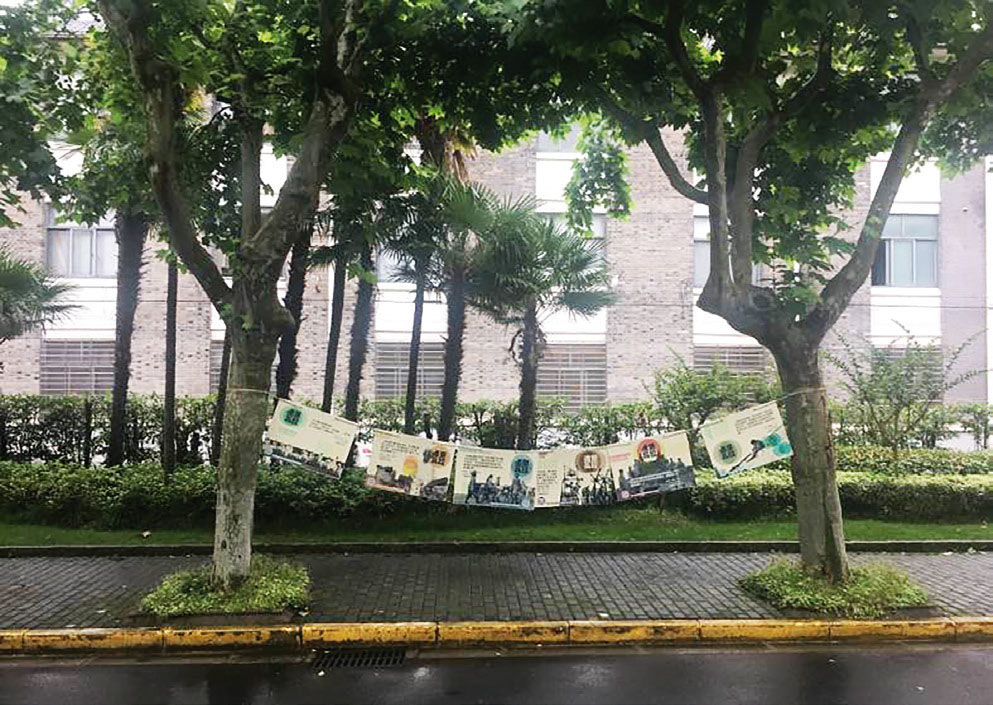Collaborative teaching between cultures and fields. Curation of the photo exhibition 'Dilliwale' in Shanghai
Scene 1 Teaching between cultures (by Surajit Sarkar)
It was during a walk with two dozen students through a lilong in the French concession in Shanghai that I learnt that Lu Xun had lived in such a neighborhood. It reminded me of my teaching past in another milieu, when Lu Xun’s writing on education suggested a way of looking at teaching-learning in a primary schoolroom in rural Central India.
The old buildings of the lilong, nestled together, human scale and friendly looking, were visually just a hiccup between the high-rises. It was then that a question put forward by a student earlier that week came back, “How are we, living in Shanghai, supposed to make sense of Delhi? We have never even seen the place?” Which begged the question, “How will I as a first time visitor to Shanghai make sense of what I am seeing in the lilong?”
Scene 2 Teaching between fields (by Xiaomei Zhao)
'Dilliwala' is the common name for a person from Delhi. In plural, it becomes 'Dilli-wale'. We use the plural form to indicate the different stories of the people in Delhi. That’s what this exhibition ‘Dilliwala: Dilliwale through the lens’ is about.
The curation of the exhibition was a task for the students. The instructors presented the exhibition photos in groups according to where they were taken. However, the students, more interested in people’s lives and stories rather than physical spaces, did not accept this framework. Gladly respecting the students’ perspectives, the final outcome was an exhibition of the lived experiences of the people in Delhi, and how they accommodate themselves in this fast-changing city. The students’ interpretation was a pleasant surprise to me, a researcher on architectural history.
The photos of Delhi, on display from 25 May to 9 September 2018 at Fudan University Museum in Shanghai, were collected from local neighborhoods by the Center for Community Knowledge (CCK) at Ambedkar University Delhi (AUD); the photo exhibition was curated by the junior students from the Department of Cultural Heritage and Museology, Fudan University (FDU). It was the outcome of a collaborative teaching program between the two institutes in India and China, funded by FDU and the ‘Humanities across Borders’ (HaB) program of IIAS, Leiden.
Teaching about urban space between cultures and fields
The current exercise was to develop a method of looking at ‘urban space’ through the curation of a photo exhibition, allowing students to develop an understanding of a lived city in a foreign country, along with its historical pasts. The students would develop a narrative, highlighting an alternative view of the lived city that challenges the dominant narratives in the production of urban space. This exercise, to visually communicate the story of a city and its people, has rhetoric at its heart, and students learn how to develop an imagination required for logical and reasoned arguments.
The challenge of collaborative teaching lies in two perspectives: firstly, the Chinese students acting as curators have never been to the city of Delhi where all the photos were taken; secondly, the students major in museology and lack the knowledge of urban studies. Nevertheless, these challenges are potential strengths. In addition, the students have the empathy of the audience, who are Shanghai residents, unlikely to have visited India, yet interested in India’s history and culture. To convert the challenges into strengths, the collaborative teaching combines different teaching methods such as lectures, workshops and city walks, provided by instructors from India and China in the fields of community studies, architectural history, landscape, museology and anthropology.
Keeping this in mind, the urban space was presented from the perspective of public space analysis, which shows multiple imaginations and representations of space. This includes within it non-discursive forms of meaning-making, like language and images, but also emotion. Both are integral to inventing and composing, and there is a connectedness between cognitive processes and development, and production, as well as imagination. In this way, the teaching process attempted to draw a balance between representing the city formally and informally; between a conventional urban heritage pre-occupation with recovering the past and appropriating the present; and using oral interviews of memory and experience to develop a critical reflection of the present in speculation of the future.
Collaboration objectives – the background
The collaborative teaching exercise was developed to help students at FDU Shanghai curate a photo exhibition of archival photographs of life in Delhi in the twentieth century. The aim was to familiarize students of museology with a conceptual understanding of urbanization and people, and engage them in urban oral histories through interpretations of each photo and walks in their own city that draw attention to processes and practices of everyday life.
As part of this process, a visiting faculty member from AUD Delhi (Surajit Sarkar) would accompany the collection of photographs, to describe these both literally and contextually. Because Surajit was visiting Shanghai for the first time, he had to start his explorations by knowing what to ask. Two sources of information on Shanghai are works of fiction set in the city, and scholarly writings on the city. Yet the best source emerges from the city itself, in the form of a walk into neighborhoods, the smallest social sphere of a city. It is here that we can walk, touch, feel, smell, talk and hear about the spaces of human residential and livelihood settlements. Consequently, a pre-visit discussion between the instructors led to a plan to include a city walk of a neighborhood as a learning method, during which the students would escort the visiting faculty and discuss what they saw. This way, the streets, lanes, shops and residences presented a framework for observation, in which the visiting faculty could learn about an unfamiliar place by asking questions, while the students in turn learned what is worth asking, and from whom. Suddenly, everyone involved discovered how a quiet city street may not be so silent after all.
Urbanization and photographs: making cross cultural comparisons
Recognizing that curating a photo exhibition requires an ability to imagine across cultures, the faculty from both institutions believed that using a hands-on, place-based learning exercise, would help in reading the photographs. The first exercise for the students would be to make a presentation on Urbanization, Heritage and Everyday Life. This would lead to describing Delhi through the typology of its built urban environment – both through history and habitat. A subsequent workshop to describe the photographs, would help draw connections between tangible and lived heritage. It would also bring the cross-national element in by developing a comparative look at urban spaces and transformations from a lived perspective.
The second exercise involved ‘Developing Visual Literacy’: knowing how to decipher a photograph. This encourages slowing down and paying attention, and demands that students step back from the hyper cultures of the internet age, to look closely, observe and engage. Visual literacy is about understanding what we see with our eyes, our minds, and our hearts. This process began by describing the photographs of Delhi from 1880 to 1980, focusing on the built environment, objects, other tangible worlds and intangible memory, lived histories and experiences. Finding and deciphering visual clues, and recognizing the visual elements in these images, was central to the exercise. Borrowing from urban visual ethnography, we started by discussing the photos that portrayed everyday life in the last century. Guided by specific sets of questions, ranging from Food, Clothing, Housing, Water and Land, the photographs emerged as reading guides for the city. These at times even entered the intangible world, of Memories and Experiences, Stories, Urban Legends and Local Myths.
After it was decided to include a walk as part of the workshop, we needed to select the appropriate location. A neighborhood in the old city, which is encircled by rapid change, was chosen. The preserved historic sites are left standing in the middle of surrounding high-rise buildings; the remaining residents, who are mostly older, find the encroachment to be daunting. The walk provided opportunities for conversations with locals, for example, when students discovered an organic vegetable shop on the street, whose owner lived elsewhere and invited them to meet at a less busy hour. During the walk, the students wondered how ‘not so rich’ people could be living in buildings of quite some grandeur. They came to understand that the old and the new in the neighborhood had their own story, as many of the not so rich lived in shared accommodations, which looked like preserved heritage properties from the outside, but certainly not on the inside.
Besides the physical buildings or urban infrastructure, the relationships between residents of a neighborhood are equally significant. Residents or families living together in an area for a long period of time experience a very different set of relationships than those found in localities comprising mostly new residents who have little in common culturally or linguistically. Consequently, the students were able to add a layer of lived experience through oral narratives to bring about a human-centered way of looking at the city.
The photo exhibition as the main outcome
The students were divided into five groups, respectively in charge of: content, design, products, communication and educative activities. Inspired by the workshop and the city walk, the students picked up threads of everyday life from the photos, rather than typologies of city habitation. The students placed the photos into six units, each of which gave one perspective of people’s lives in Delhi. Some students had pondered, “We’ve never seen Delhi or India, how can we understand Delhi without comparing with Shanghai?” Therefore we introduced old Shanghai photos as parallel stories to understand lives and lifestyles, so that exhibition visitors could make sense of what they were seeing; to help them bridge the two cities, the two cultures, and also to show how the same process of urbanization has been adapted by residents while creating a new life.
The resulting units were titled: ‘The Chair’s Revolution’, ‘A Cobbler’s Success’, ‘When Mules are Unnecessary’, ‘The Song of Ferris Wheels’, ‘Celebration of Tilaka’, and ‘Spiritual Oasis for Wanderers’. A prelude, shown ahead of the six units, displayed the history and demographic information of the city. All units presented the many ways in which people adapt their everyday lives due to rapid changes of society and the city around them. At times they don’t just cope, they in fact lead the ever-changing trends, as shown in the first three units. The fourth and fifth units reflected the need to sing for the pleasure in everyday life; they showed games in diverse urban places, and festivals including both the religious events and national memorials. The last unit compared the changes of use in the river and monumental spaces, as a space of reflection. The epilogue was a summary of the stories of the people living in Delhi and Shanghai, reminding the visitors of their own stories in their own cities.
Alongside the exhibition, other academic and educative activities were ongoing, including public lectures about Indian culture, visits by groups of primary school pupils, as well as a photo contest on India and urban life. Indian henna tattoos were applied to the hands of those visitors who wanted to experience more about Indian art.
Inspiration
This collaborative teaching program inspired both the students and instructors. The visiting instructor Surajit Sarkar from Delhi presented his views through lectures about Indian history and culture, while he also talked of how to ‘see’ a city you do not know. It was his first visit to China and his own experience of an unknown urban place inspired the students to imagine Delhi, reading the city through the photo exhibition. Students learned how to read a city through people, through their everyday lives, through their own eyes and experiences and through the narratives of others. It is about how to respect history and places, and reflect on our own city and neighborhood.
For example, one of the students, half Japanese and half Chinese, living in Shanghai, knows the city well but had never thought about how others see his city. ‘Others’ does not only refer to immigrants or visitors but also people who have been living here for long and who have witnessed the changes. This student was so inspired by the program that he now plans to interview his family and ask them to tell their stories about their shared memories and places.
We, the instructors, were also inspired by this teaching approach. It connected lectures, workshops and site visits. It linked a city where we live and a city that we have never been to. We worked together to get to know each other and each other’s cities. We also worked together to assemble the fragments of the cities in our own fields, the history, the architecture, the monuments and the landscape, thus integrating the fragmentized images of the cities from different fields and views, through the lens of different people who lived, live and will live in these great cities.
Conclusion
With the increasing popularity of global studies and world history, it makes sense to emphasize the unique role that cities play. As urban studies today direct the analytic gaze beyond Euro-America, to cities at the edge of the western world that were once ‘off the map’, it examines the interconnections and congruence between them. Recognizing the commercial, cultural, and intellectual networks grounded in cities, and capturing their expressions in everyday life, brings together photography and urban scholarship to analyze the history of an uneven global urban fabric.
The process of creating ‘Dilliwale’, the photo exhibition of the unfamiliar city of Delhi, by students in Shanghai, none of whom had ever seen Delhi, led them to discover other ways of looking at their own city. The process evolved interdisciplinary ways to look at the city – from architecture, history, small trades to crafts, along with images of the city’s past made by residents and local associations. In this way, the participants of the exercise, along with visitors, discovered a way of looking at and understanding the city that goes beyond the monumental and the planned.
As an example of collaborative teaching between different cultures and fields, the focus of the Dilliwale exhibition moved on from history and memory, and the politics of representation to what ‘counts as knowledge’ in humanities and beyond. Even as participants wondered how they would recognize and interpret the cultural differences between the two cities involved, what emerged was the universality of the urban experience - an articulation that was made meaningful as the Dilliwale exhibition drew on portraits of Shanghai to describe the process of city making to an audience, curious about their neighborhood, but unfamiliar with it.
Zhao Xiaomei, Lecturer at Department of Cultural Heritage and Museology, Fudan University, zhaoxiaomei@fudan.edu.cn
Surajit Sarkar, Associate Professor, Centre for Community Knowledge (CCK), Ambedkar University Delhi, surajit.cck@aud.ac.in
The collaborative teaching program would not have been realized without the support from faculties of FDU and AUD, the researchers at CCK, AUD and the Humanities Across Borders program (HaB). Special thanks to Prof. Zhaohui Liu, Dr Saiping Ma and Dr Ding Shi from FDU, Dr Aarti Kawlra and Dr Philippe Peycam from HaB. We appreciate the wonderful students who have curated the exhibition and made everything possible.




